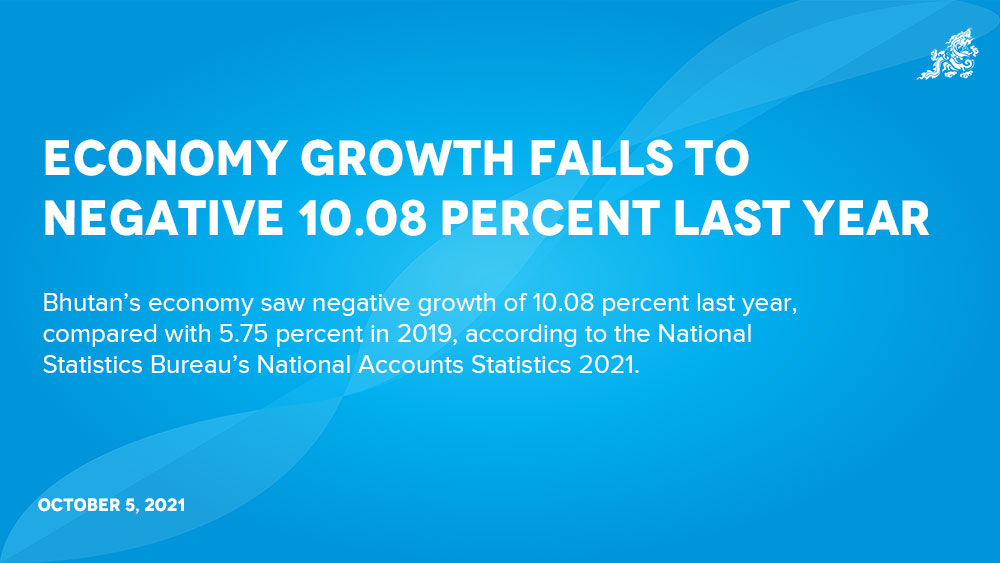Thukten Zangpo
Bhutan’s economy saw negative growth of 10.08 percent last year, compared with 5.75 percent in 2019, according to the National Statistics Bureau’s National Accounts Statistics 2021.
The country’s economy saw a drop of Nu 171.57 billion (B) from Nu 178.56B in 2019, a decrease by Nu 6.99B.
The industry sector, which has the highest share of gross domestic product (GDP) at 46.36 percent saw a 12.92 percent drop, followed by the service sector at 10.74 percent.
Meanwhile, the primary sector, which has a share of 19.23 percent GDP, recorded 4.57 percent growth.
The higher growth of the primary sector was a result of the increase in production of crops, like paddy, buckwheat, wheat, barley, mustard, and cardamom, among others.
The GDP share of mines and quarries fell by 81.84 percent, and the share of the construction sector fell by 20.64 percent.
Hotels and restaurants saw their GDP share drop by 73.46 percent. Meanwhile, manufacturing and transport and communication by 20.76 percent and 14.65 percent, respectively.
A major contribution to the downfall in the growth of this sector was mainly the massive decreases seen by air transport (-90.03 percent), travel agencies (-89.39 percent), and land transport (-14.24 percent), among other sub-sectors.
However, the communication sector saw positive growth of 20.65 percent.
With the full commissioning of the Mangdichhu power plant, the electricity and water sector saw 27 percent growth last year.
According to the report, finance and insurance, wholesale and retail trade, and other business services also saw growth contractions.
The contraction in growth was mainly due to the weak performance of the financial intermediation services (banking sector).
The gross national income saw a contraction by 7.23 percent due to a higher outflow of primary income, and also because of the drop in GDP.
The primary income is the return that accrues to institutional units for their contribution to the production process, or for the provision of financial assets, or from renting natural resources to other institutional units. It comprises compensation of employees, investment income, and other primary income.
The primary income outflow was recorded at Nu 12,427.29 million (M) as against Nu 1, 841.83M primary income received.
On the expenditure (demand) side, the government’s expenditure saw growth of 4.10 percent. However, household expenditure declined by 7.95 percent.
The trade deficit in 2020 increased by 6.28 percent. At the same time, gross national saving was Nu 29,730.68M in 2020 versus Nu 40,146.19M in 2019, which is a drop of Nu 10,415.52M.
The government savings were recorded at Nu -23.19M, and private savings (households, private and public corporations) at Nu -29,753.86M. Overall, it saw -20.99 percent growth in 2020 from the previous years.
“With the drop in national savings in 2020, like in the past years, the gross national savings failed to meet the investment requirements of the economy,” the report states.
Bhutan’s GDP per capita was estimated at Nu 229,090.40 (the USD 3,129.86) in 2020, which is a drop of Nu 11,665.26 (USD 288.96) from the previous year.
Edited by Jigme Wangchuk


